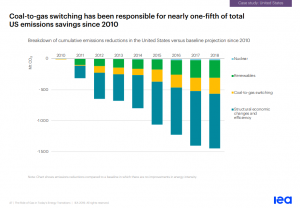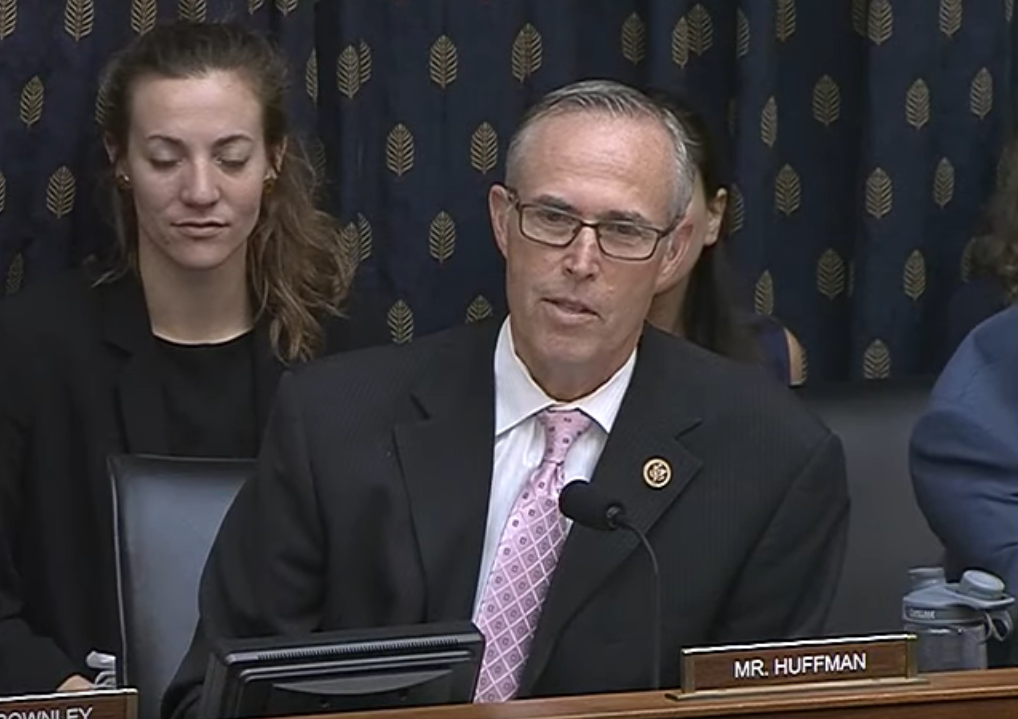Congressman Jared Huffman elected to ignore some key facts regarding the role of natural gas in achieving tangible emissions reductions while also meeting the world’s increasing demand for energy. The California Democrat attacked this important energy resource last week during a hearing held by the House Select Committee on the Climate Crisis.
Here’s a look at the facts:
HUFFMAN: “And I’m not talking about natural gas because as I take a look at that, I don’t think we have time for fake solutions and quite honestly if you — yes, it has less of a carbon profile and the burning into the system.”
THE FACTS: The role of natural gas in reducing carbon emission is widely accepted and underpinned by a steady stream of irrefutable datapoints.
Most recently, a report from the International Energy Agency (IEA) underscored the importance of natural gas in reducing carbon emissions in both the U.S. and around the world. In fact, nearly one-fifth of total U.S. emissions savings since 2010 have been the result of coal-to-gas switching, according to the analysis.

Globally, the IEA said more than 500 million tones of CO2 emissions have been avoided in the past decade as a result of increased use of natural gas. Per the report:
“These emissions would have been closer to 40 Gt without changes in the global economic and energy system since 2010: these include reductions in the energy intensity of the world economy, in part due to greater efficiency, as well as reductions in the carbon intensity of the energy sector related to the rise of renewables and switching to less carbon-intensive fuels. Coal-to-gas switching avoided more than 500 million tonnes of CO2 emissions over this period.” (emphasis added)
The IEA’s analysis has been echoed by the U.S. Energy Information Administration, which notes energy-related carbon emissions are about 13% below 2005 levels as a result of greater use of natural gas. According to the EIA:
“The underlying energy consumption trends that resulted in these changes—mainly because more electricity has been generated from natural gas than from other fossil fuels—have helped to lower the U.S. emissions level since 2005 because natural gas is a less carbon-intensive fuel than either coal or petroleum.”
This trend is expected to continue in 2019, with the EIA predicting natural gas to help drive a 2% decrease in energy-related carbon emissions.
“After rising by 2.7% in 2018, EIA forecasts that U.S. energy-related carbon dioxide (CO2) emissions will decline by 2.0% in 2019 and by 0.9% in 2020. EIA expects U.S. CO2 emissions will fall in 2019 and in 2020 because its forecast assumes that temperatures will return to near normal, and because the forecast share of electricity generated from natural gas and renewables increases while the forecast share generated from coal, which produces more CO2 emissions, decreases.” (emphasis added)
Former President Obama has even refuted Rep. Huffman’s assertion that natural gas is a ‘fake solution’ to reducing emissions. As Obama noted in his 2014 State of the Union address:
“Now, one of the biggest factors in bringing more jobs back is our commitment to American energy. The all-of-the-above energy strategy I announced a few years ago is working, and today, America is closer to energy independence than we’ve been in decades.
“One of the reasons why is natural gas – if extracted safely, it’s the bridge fuel that can power our economy with less of the carbon pollution that causes climate change.” (emphasis added)
HUFFMAN: “But if you add in the fugitive methane, which we think is somewhere between 1 and 9 percent at 3.5 percent methane loss, [natural gas] just as bad as coal.”
THE FACTS: A recent peer-reviewed study from the National Oceanic and Atmospheric Administration concluded there has been no large increase in U.S. methane emissions over the last decade despite a 47 percent jump in natural gas production. According to lead author Xin Lan:
“We analyzed a decade’s worth of data and while we do find some increase in methane downwind of oil and gas activity, we do not find a statistically significant trend in the U.S. for total methane emissions.”
The analysis, which was published in Geophysical Research Letters, further concluded that some previous studies have significantly overestimated methane emissions from oil and gas production. According to researchers:
“Our estimated increases in North American ONG CH4 emissions (on average ~ 3.4 ± 1.4 % yr-1 for 2006-2015, ±σ) are much smaller than estimates from some previous studies and below our detection threshold for total emissions increases at the east coast sites that are sensitive to U.S. outflows. We also find an increasing trend in ethane/methane emission ratios which has resulted in major overestimation of oil and gas emissions trends in some previous studies.” (emphasis added)

